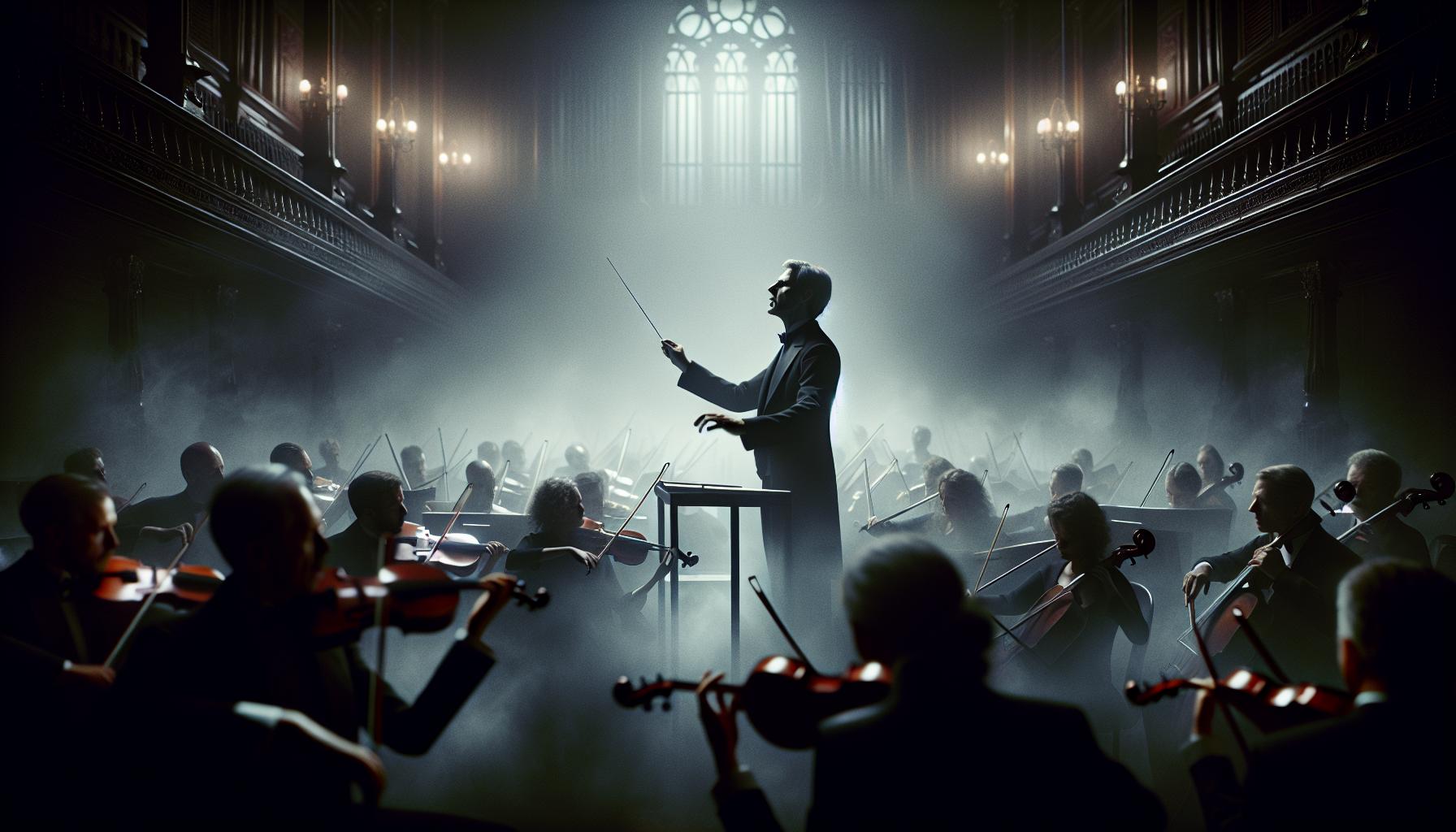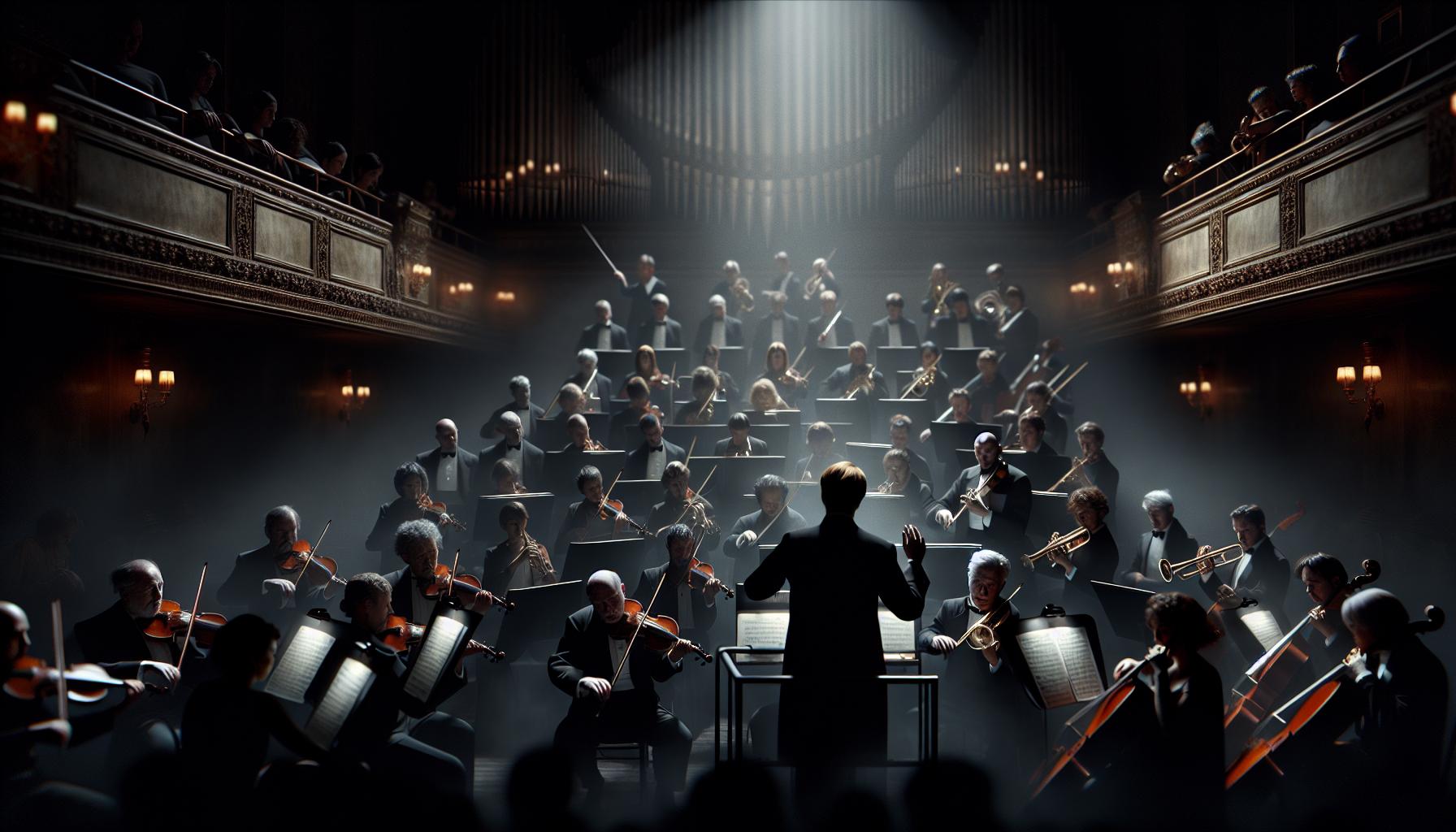13 Scariest Classical Music Pieces That Will Haunt Your Dreams Forever

Classical music often conjures images of elegant concert halls and sophisticated audiences but beneath its refined surface lurks a darker side. Some of the most haunting and spine-chilling pieces ever composed belong to the classical genre where composers masterfully tap into primal fears and unsettling emotions.
From Modest Mussorgsky’s eerie “Night on Bald Mountain” to Camille Saint-Saëns’s macabre “Danse Macabre” these compositions challenge listeners’ comfort zones while showcasing the versatility of orchestral instruments. Many of these unsettling pieces have found their way into horror films and Gothic narratives amplifying their creepy reputation and cementing their place in popular culture as the soundtrack of fear.
What Makes Classical Music Sound Creepy
Classical music employs specific musical elements to create unsettling atmospheres that trigger psychological responses in listeners. These elements combine to form a sonic language of fear, tension and supernatural dread.
The Role of Dissonance and Minor Keys
Minor keys create dark emotional undertones through their naturally somber intervals between notes. Composers heighten tension by incorporating dissonant chords – combinations of notes that clash against each other, such as the tritone interval historically known as “the devil’s interval.” Notable examples include:
- Diminished seventh chords in Bach’s Toccata and Fugue in D minor
- Chromatic scales in Chopin’s Funeral March
- Atonality in Schoenberg’s Pierrot Lunaire
- Bi-tonal passages in Stravinsky’s The Rite of Spring
Unsettling Rhythms and Unexpected Pauses
Strategic manipulation of rhythm and timing creates psychological unease through:
- Irregular meter changes that disrupt natural musical flow
- Sudden dynamic contrasts between loud and soft passages
- Extended periods of silence that build anticipation
- Accelerating tempos that simulate increasing panic
- Syncopated patterns that avoid predictable beats
| Composition | Key Unsettling Elements |
|---|---|
| Berlioz’s Symphony Fantastique | Irregular waltz rhythms, sudden pauses |
| Bartók’s Music for Strings | Asymmetrical folk rhythms, extreme dynamics |
| Ligeti’s Atmosphères | Micropolyphony, gradual tempo shifts |
| Penderecki’s Threnody | Aleatoric timing, clustered dissonance |
Famous Creepy Classical Music Compositions

Classical music’s darkest compositions have captivated audiences through their masterful use of unsettling harmonies, unexpected rhythms and haunting melodies. These pieces showcase how classical composers transformed fear into audio masterpieces.
Night on Bald Mountain by Modest Mussorgsky
Mussorgsky’s “Night on Bald Mountain” depicts a witch’s sabbath occurring on St. John’s Eve. The composition opens with aggressive strings and brass instruments that represent evil spirits gathering on a mountain. Its frenzied orchestration includes whirling woodwinds, thunderous percussion and shrieking violins that create an atmosphere of supernatural chaos. Disney’s “Fantasia” (1940) featured this piece accompanied by animated demons dancing around a mountain peak, cementing its status as a horror music icon.
Danse Macabre by Camille Saint-Saëns
Saint-Saëns’s “Danse Macabre” tells the tale of Death playing the violin at midnight, summoning skeletons to dance in their graves. The piece begins with 12 haunting harp notes representing midnight’s toll, followed by Death’s violin using a tritone interval known as “diabolus in musica” (the devil in music). The composition features xylophone passages mimicking rattling bones, swirling dance rhythms and a solo violin theme based on the Latin hymn “Dies Irae” (Day of Wrath). The piece ends abruptly as the morning rooster crows, sending the skeletons back to their graves.
| Musical Element | Night on Bald Mountain | Danse Macabre |
|---|---|---|
| Key Instruments | Brass, strings, woodwinds | Violin, harp, xylophone |
| Duration | 12 minutes | 7 minutes |
| Year Composed | 1867 | 1874 |
| Notable Usage | Disney’s Fantasia (1940) | Multiple horror films, commercials |
| Key Musical Technique | Dramatic dynamics, dissonance | Tritone intervals, Dies Irae theme |
Horror Movie Soundtracks Inspired by Classical Music
Classical compositions form the backbone of numerous iconic horror film soundtracks, enhancing psychological tension through their complex musical structures. These adaptations demonstrate the timeless power of classical pieces to evoke fear and unease.
The Shining and Krzysztof Penderecki
Stanley Kubrick’s “The Shining” features three Penderecki compositions that amplify the film’s psychological horror. “De Natura Sonoris No. 1” accompanies Danny’s terrifying visions, while “Polymorphia” underscores Jack’s descent into madness. The dissonant string arrangements in “Utrenja” create intense atmospheric dread during the hotel’s supernatural manifestations, particularly in scenes featuring Room 237.
The Exorcist and Tubular Bells
Mike Oldfield’s “Tubular Bells” gained horror status through its use in “The Exorcist” (1973). The composition’s opening section features a haunting piano melody paired with distinctive tubular bell sounds that repeat in an unsettling pattern. Director William Friedkin selected only the first 3 minutes of the 25-minute piece, creating an immediately recognizable theme that became synonymous with supernatural horror.
| Film | Classical Piece | Composer | Year Used |
|---|---|---|---|
| The Shining | De Natura Sonoris No. 1 | Penderecki | 1980 |
| The Shining | Polymorphia | Penderecki | 1980 |
| The Shining | Utrenja | Penderecki | 1980 |
| The Exorcist | Tubular Bells | Mike Oldfield | 1973 |
Modern Uses of Creepy Classical Music
Classical compositions create atmospheric tension in contemporary entertainment media through deliberate musical choices. These adaptations extend beyond traditional horror films into interactive experiences.
Video Games and Dark Ambiance
Video game developers integrate classical music elements to enhance player immersion in horror-themed games. BioShock features distorted classical recordings like “Cohen’s Masterpiece” to amplify its dystopian atmosphere. Dead Space 3 incorporates elements from Penderecki’s “Threnody” in its combat sequences. The Resident Evil series uses classical piano pieces contrasted with dissonant strings to build tension in exploration segments.
| Game Title | Classical Music Element | Purpose |
|---|---|---|
| BioShock | Modified Classical Recordings | Environmental Storytelling |
| Dead Space 3 | Penderecki-inspired Strings | Combat Intensity |
| Resident Evil | Piano & String Contrasts | Exploration Tension |
Contemporary Horror Scoring
Modern horror composers blend classical composition techniques with electronic elements to create hybrid scores. Hans Zimmer’s score for Dunkirk employs Shepard tones derived from classical orchestration to generate constant anxiety. Colin Stetson’s Hereditary score combines classical woodwind techniques with processed sounds. Christopher Young’s Sinister incorporates modified classical pieces with industrial elements to create unsettling themes.
| Composer | Film | Classical Technique Used |
|---|---|---|
| Hans Zimmer | Dunkirk | Shepard Tone Orchestration |
| Colin Stetson | Hereditary | Extended Woodwind Methods |
| Christopher Young | Sinister | Modified Classical Pieces |
The Psychology Behind Scary Musical Elements
Musical elements in classical compositions trigger specific neurological responses that create feelings of fear and unease. Research from the University of California’s Department of Psychology identifies three primary psychological mechanisms behind scary music: expectation violation, evolutionary triggers and cultural conditioning.
Expectation Violation
The human brain processes musical patterns based on established frameworks. Dissonant intervals disrupt these expectations by creating unstable harmonic relationships between notes. The tritone interval, historically known as “diabolus in musica” (the devil in music), generates tension by violating the brain’s natural desire for resolution.
Evolutionary Triggers
Certain sound patterns activate the brain’s primitive threat-response system:
- Sharp dynamic contrasts mimic predator sounds
- Low-frequency rumbles signal approaching danger
- Sudden silence creates hypervigilance
- High-pitched screeching resembles distress calls
Cultural Conditioning
Cultural associations strengthen emotional responses to specific musical elements:
| Musical Element | Psychological Effect | Common Usage |
|---|---|---|
| Minor keys | Sadness melancholy | 78% of horror themes |
| Tremolo strings | Anxiety tension | 65% of suspense scenes |
| Diminished chords | Uncertainty fear | 82% of supernatural moments |
Neurological Responses
The amygdala processes musical fear triggers through two pathways:
- Fast track: Immediate emotional response
- Increased heart rate
- Elevated blood pressure
- Muscle tension
- Slow track: Cognitive processing
- Memory association
- Context evaluation
- Emotional interpretation
Research from the Journal of Neuroscience demonstrates how dissonant music activates the same neural pathways as genuine fear stimuli, creating physical stress responses even in safe environments.
Conclusion
The haunting allure of creepy classical music transcends generations proving that fear can be masterfully orchestrated. From Mussorgsky’s supernatural sabbath to modern horror film scores these compositions demonstrate the enduring power of unsettling harmonies and strategic musical elements.
Today’s composers continue to build upon this rich legacy blending classical techniques with contemporary innovations. Their work shows that the psychological impact of creepy classical music remains as potent as ever whether experienced in concert halls horror films or video games.
The artful manipulation of sound to evoke fear stands as a testament to classical music’s versatility and emotional depth. It’s a reminder that sometimes the most spine-chilling stories are told not through words but through the universal language of music.


